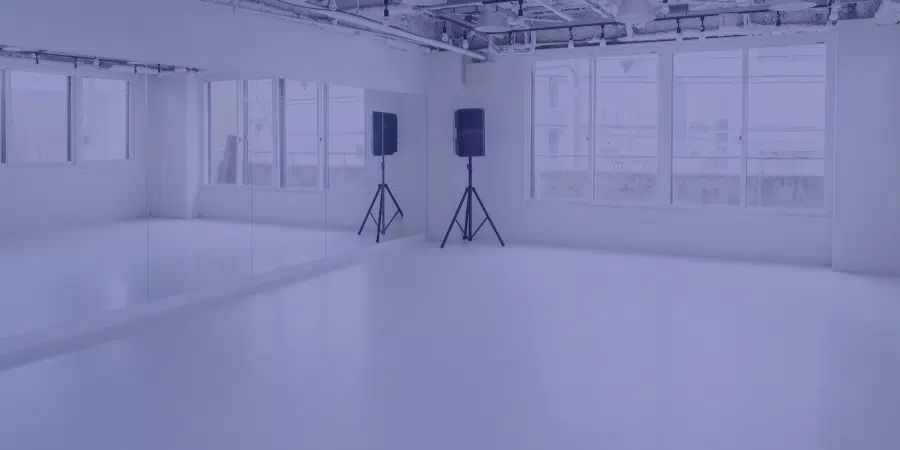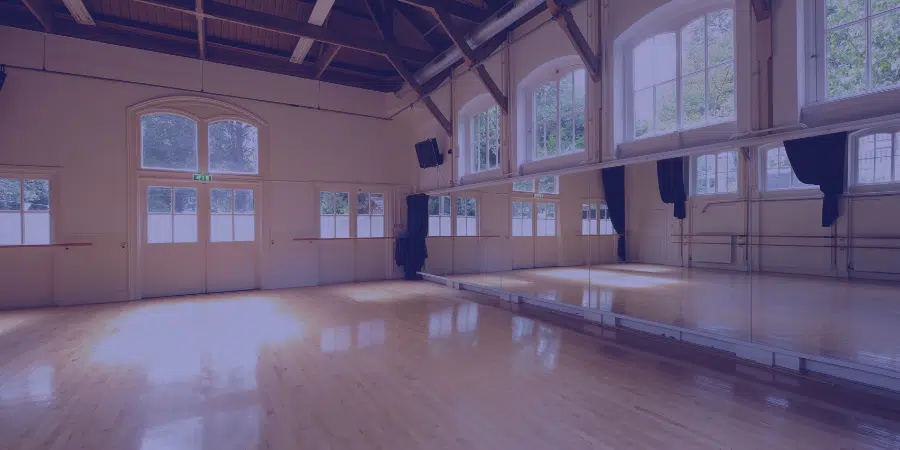When you think about dancing, a few images come to mind. Among ballet barres, beautiful flooring, and pointe shoes, you probably envision a gorgeous mirrored wall too. Before you open your doors, ballet studio mirrors are an essential finishing touch for any studio. Read on to learn more about finding the best dance studio mirrors for your space, from sizing to materials.
The Basics Of Dance Studio Mirrors
Anyone dedicated to the art of dance knows the importance of perfecting form. In order to do that, dancers need to be able to see themselves, preferably from multiple angles. The best mirrors can be costly, but the one-time investment is worth every penny. Cutting costs can result in distortion and an unpleasant experience for your dancers, not to mention safety issues.
We discuss some of the major factors to consider below, but before you make any decisions, consider which unique challenges you may have to deal with. For instance, if you rent your space, discuss this purchase with the owner of your building. While you need to ensure that any mirrors are safely installed, you might need to consider less permanent options. On the other hand, if you own your studio space, you have the freedom to invest in long-term options.
What Types Of Dance Studio Mirrors Are Available?
From professionally installed seamless mirrors to DIY options that are appropriate for smaller studios, you have a range of options. Let’s take a look at some of the important factors to consider.
Size
First, measure your studio space to get an accurate estimate of the size you need. Think about whether you want a seamless look with one large mirror or if you’re willing to place several pieces together.
In general, a custom mirror built to be a perfect fit for your wall will cost more but look better.
Thickness
Mirrors can range from 1/4” thickness up to 1” thickness. The thicker the mirror, the more sturdy it will be.
While it’s rare, accidents do happen. If someone falls against the wall, a thicker mirror will hold up better against the force.
Types
Glass is always the best way to get a clean and clear reflection. This is the most common choice for dance studios.
For the very best clarity, look for low-iron glass. This type of mirror will reduce any blueish tones. Furthermore, tempered glass is another variation to always consider for safety reasons. When it breaks, it shatters into many smaller pieces that are usually harmless.
Thinking of skipping glass to save money? Unfortunately, acrylic and plastic mirrors can be blurry and even distorted if they aren’t applied correctly. They also don’t hold up well over time. Dance studio mirrors made of Mylar can be an attractive option since they’re higher quality than acrylic and plastic, but they’re still shatter-proof. If you have a studio dedicated to young children, you may want to consider this option.

Framed vs. frameless
Whether you choose to have a framed or frameless ballet studio mirror comes down to personal preference. Some studio owners like the look of an elegant frame, as long as it doesn’t impede a student’s view. Frames can also cover any sharp edges or corners.
However, many studio owners prefer a frameless look that stretches from wall to wall to cut down on distractions.
Where Should I Put Our Dance Studio Mirrors?
In most cases, you will want a large mirror that encompasses one whole wall of the studio. This will be the direction your students face.
You may also choose to put a mirror on one side wall if your space permits. This is helpful for your dancers to be able to see themselves when turning or looking in that direction.
Believe it or not, less is more when it comes to dance studio mirrors. Avoid placing a mirror that faces any other mirror. This can create a distracting tunnel effect. Instead, focus on two high-quality mirrored walls in any space.
How Tall Are Dance Studio Mirrors?
The size of your space will determine the exact dimensions of your dance studio mirrors. Manufacturers offer a range of sizes, and many can create a custom fit if necessary.
In general, your mirrors do not have to be flush with the floor for dancers to see their feet. By placing it 16”-22” above the floor, you can free up outlet space and reduce costs.
However, it’s important to consider the variety of classes you offer at your studio. If you plan to offer fitness classes like yoga or Pilates as well, you will want mirrors that meet the floor so students can see themselves while sitting down.

Where To Find Dance Studio Mirrors
You have a range of options when you’re ready to purchase your dance studio mirrors.
Online wholesalers provide many sizes and types, making it easy to find a generic, but good fit for your space. Local glass installers and dance retailers are another routes to consider if you’re looking for a tailored fit. Feeling handy? Big box DIY stores sell glass mirrors that you can install yourself with the right tools.
Remember, the best types of mirrors will be ones that are made specifically for dance studios or gyms. These products have been designed with your type of space and needs in mind.
How To Install Dance Studio Mirrors
Mounting can be difficult due to the weight and size of dance studio mirrors. While it is possible to install a mirror yourself, professional installation is the best method. This will ensure that your mirrors are safe and secure for your students. In most cases, metal brackets are screwed into the wall line up with openings on the back of the mirror for a close fit. These also come with specially designed adhesives that can support the weight of the mirror and keep it in place.
Lastly, your ballet barre is another important detail to consider before installing mirrors. Drilling holes into your mirror is expensive and can hurt the integrity of the mirror over time. This commonly leads to chips, cracks, and breakage. There are two ways to avoid this. You can either use a floor-mounted barre or place mirrors directly above and below the barre after it is screwed into the wall.
Learn More
Once your studio is set up, the day-to-day work begins. The Studio Director’s dance studio software can help you manage class scheduling, marketing emails, billing, and much more.
For insight on how to successfully run your own dance studio, check out our eBook. It’s a free resource full of tips for dance studio owners looking to grow their own successful studio.


